Peperomia Ferreyrae (Happy Bean Plant) Profile
Written by Iris
Dec 23 2021
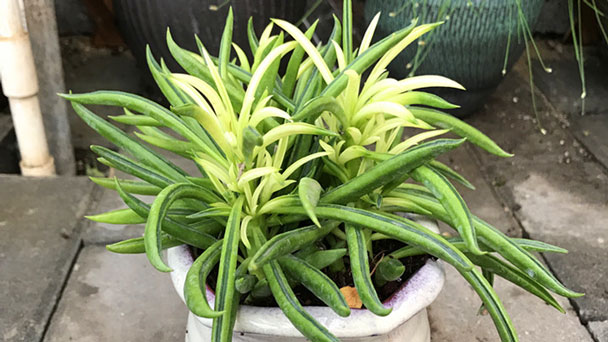
The numerous thick, narrow leaves of Peperomia Ferreyrae (Happy Bean Plant) are apple-green, curved and pointed, and look a lot like mung beans, as the name suggests. The dark stripe at the top of the leaf is actually a translucent window: the opening through which light enters the green cells inside the leaf, where the plant does photosynthesis.
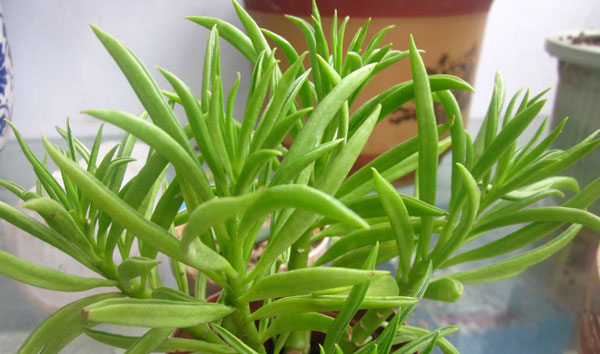
Soft succulents will not survive a hard frost, but if there is a risk of freezing temperatures they can be brought indoors to grow on a sunny window sill or under a grow light. They need ample sunlight, good drainage, and infrequent water to prevent rot. Pick containers with drainage holes and use well-draining cactus and succulent soil with 50% to 70% mineral grit such as coarse sand, pumice, or perlite. Water Peperomia Ferreyrae deeply enough for water to run out the drainage hole, then wait for the soil to fully dry before watering again.
Read More:
How to Propagate Peperomia Ferreyrae (Happy Bean Plant)
How to Care for Peperomia Ferreyrae (Happy Bean Plant)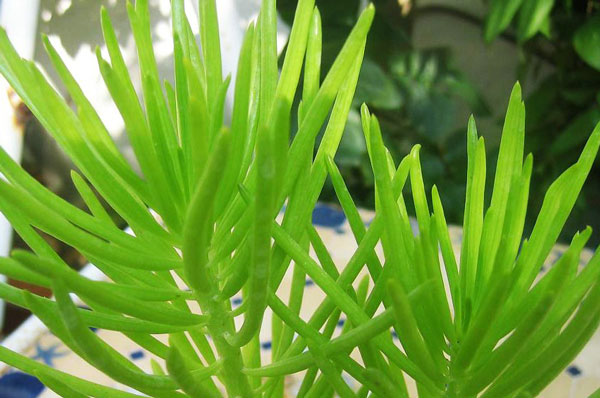
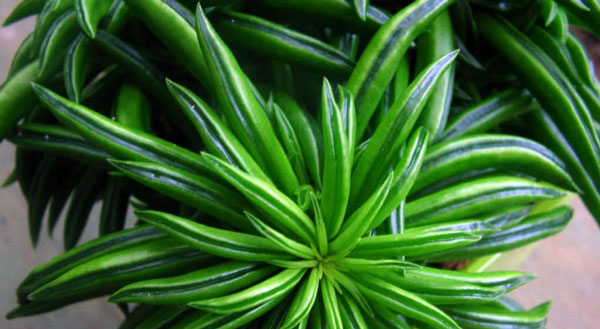
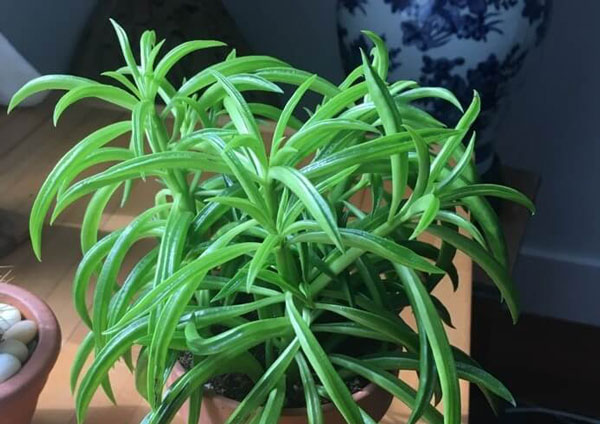
Peperomia verticillata 'Belly Button': An eye-catching varietal with a compact form and tiny leaves, somewhat reminiscent of the baby tears plant
Peperomia metallica var. Colombiana: A dazzling, tri-colored plant with foliage of bronze, silver, and red
Peperomia nitida (cupid peperomia): A varietal that's ideal for hanging baskets, complete with heart-shaped leaves edged in cream
Peperomia perciliata: A trailing varietal that has a tight growth habit and produces oval-shaped foliage and red stems
Peperomia caperata 'Suzanne': A unique plant with deeply ridged foliage and silver accents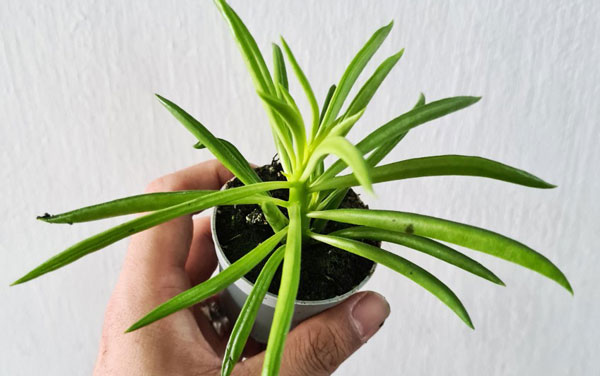
Read Next: Peperomia Ferreyrae (Happy Bean Plant) Care Guide
Peperomia Ferreyrae PicturePeperomia Ferreyrae InfoPeperomia Ferreyrae Native HabitsPeperomia Ferreyrae DistributionPeperomia Ferreyrae UsesVarieties of Peperomia FerreyraePeperomia Ferreyrae Common Pests/DiseasesPeperomia Ferreyrae Design Tips
Peperomia Ferreyrae Picture

Peperomia Ferreyrae Info
| Scientific Name | Peperomia ferreyrae |
| Common Name | Happy Bean Plant |
| Origin: | South America. |
| Native to | Peru |
| Max Growth (approx): | 15 - 20 cm tall - 10 - 25 cm spread. |
| Poisonous for pets: | Non-toxic to cats and dogs. |
| Light | Bright light |
| Watering | Allow soil to dry out between waterings |
Peperomia Ferreyrae Native Habits
Peperomia Ferreyrae (also known as happy bean Plant): Attractive succulent with long, bean-like lime green leaves. Leaves are very slender and have a translucent "leaf window" that helps them absorb more sunlight. It makes an excellent houseplant as it can tolerate slightly lower light conditions than most soft succulents. This species is native to Peru.Soft succulents will not survive a hard frost, but if there is a risk of freezing temperatures they can be brought indoors to grow on a sunny window sill or under a grow light. They need ample sunlight, good drainage, and infrequent water to prevent rot. Pick containers with drainage holes and use well-draining cactus and succulent soil with 50% to 70% mineral grit such as coarse sand, pumice, or perlite. Water Peperomia Ferreyrae deeply enough for water to run out the drainage hole, then wait for the soil to fully dry before watering again.
Read More:
How to Propagate Peperomia Ferreyrae (Happy Bean Plant)
How to Care for Peperomia Ferreyrae (Happy Bean Plant)
Peperomia Ferreyrae Distribution
Native to South America dwelling in rain forests, the peperomia ferreyrae is a perennial epiphyte semi-succulent plant species that differs very much in its appearance to many other peperomia species.


Peperomia Ferreyrae Uses
As mentioned above, a happy bean plant is mainly grown for its unique and attractive foliage. While it is grown in both gardens and as a houseplant, its small size makes it ideal for dish gardens, conservatories, greenhouses, and as a potted plant for window sills and even for desktops.Varieties of Peperomia Ferreyrae
There are hundreds of different varieties of peperomia plants, many of which make exceptional houseplants. Some of the most popular varietals include:Peperomia verticillata 'Belly Button': An eye-catching varietal with a compact form and tiny leaves, somewhat reminiscent of the baby tears plant
Peperomia metallica var. Colombiana: A dazzling, tri-colored plant with foliage of bronze, silver, and red
Peperomia nitida (cupid peperomia): A varietal that's ideal for hanging baskets, complete with heart-shaped leaves edged in cream
Peperomia perciliata: A trailing varietal that has a tight growth habit and produces oval-shaped foliage and red stems
Peperomia caperata 'Suzanne': A unique plant with deeply ridged foliage and silver accents

Peperomia Ferreyrae Common Pests/Diseases
Peperomia Ferreyrae (Happy Bean Plant) are generally resilient to pests and diseases. Peperomia Ferreyrae are easy to care for and maintain because their low pruning and repotting requirements. Make sure Peperomia Ferreyrae gets the proper care because a healthy plant will less likely to be attacked and infested by pests. On the other hand, disease are another potential problem. However, you can completely avoid such problems. The main problem is water, more specifically, moisture is often the root cause of many of the disease issues that can hound the Happy Bean Plant.Peperomia Ferreyrae Design Tips
Easy to tend to, easy to keep, the shades of green falling under Cacti and Succulents are a hot favourite round the year. What makes them so loved is how easily they look beautiful with no extra effort or time. Place it on your work desk, or on your windowsills, or in your living room, or your kitchen and you have a long-lasting companion.Read Next: Peperomia Ferreyrae (Happy Bean Plant) Care Guide
Latest Updated
- Benefits of Bugleweed - 7 Science-backed Health Benefits
- Bugleweed Dangers & Side Effects - Is It Poisonous?
- How to Plant Evergreen Trees - What You Should Know
- When to Plant Evergreens - Grow Guide for Evergreen Trees
- 12 Wonderful Evergreen Shrubs for Your Garden
- 12 Popular Evergreen Plants with Pictures for Beginners
- When And How To Prune A Lilac Bush Like a Pro
- How to Grow & Care for Lilac Vine (Hardenbergia Violacea)
- Japanese Lilac Tree (Syringa Reticulata) Care & Propagation Guide
- Shumard Oak Pros and Cons - What to Know
Popular Articles
- Winter maintenance of Antirrhinum Majus
- How to Grow Terminalia Mantaly Tree
- How to Grow and Care for Crossostephium Chinense
- How to grow Antirrhinum Majus in spring
- Peristeria Elata (Dove Orchid) Profile: Info & Care Guide
- Underwatered Snake Plant (Sansevieria Trifasciata) - Signs And How To Fix
- How to Care for Brazilian Jasmine Plant (Mandevilla Sanderi)
- How to Grow & Care for Graptopetalum Purple Delight in Summer
- Rosa Chinensis (China Rose): Plant Growing & Care Tips
- How to Care for Baby Sun Rose (Aptenia Cordifolia)